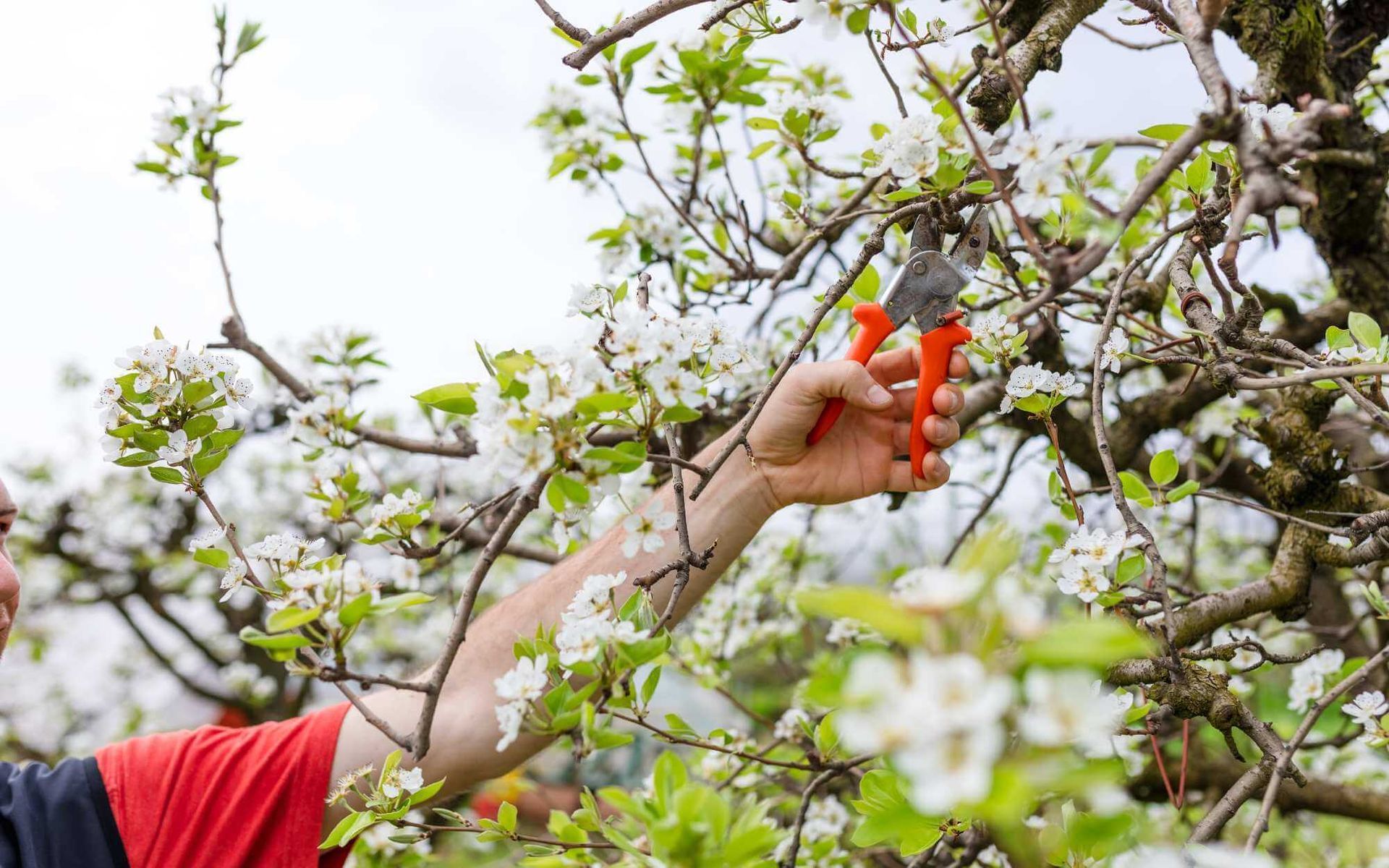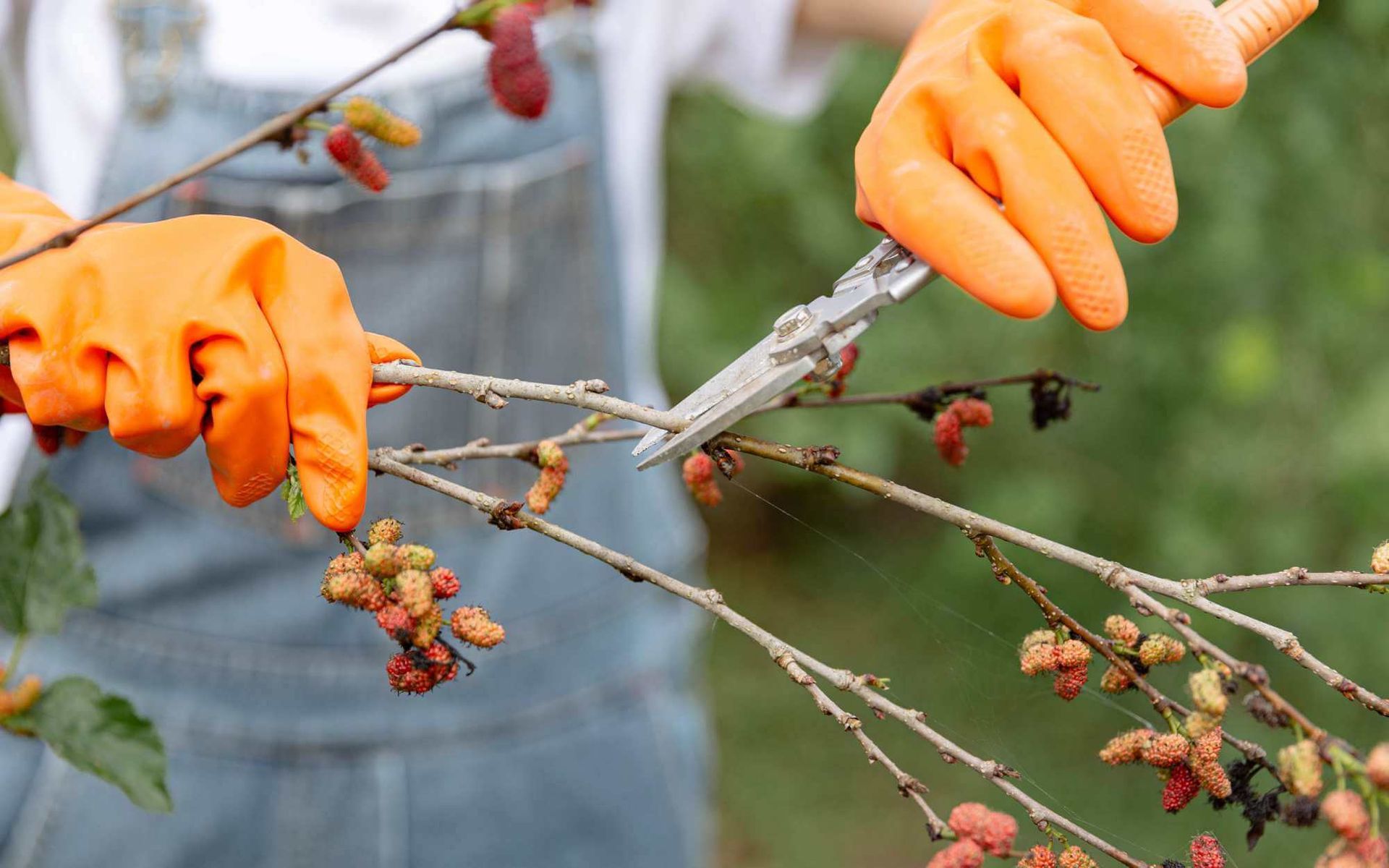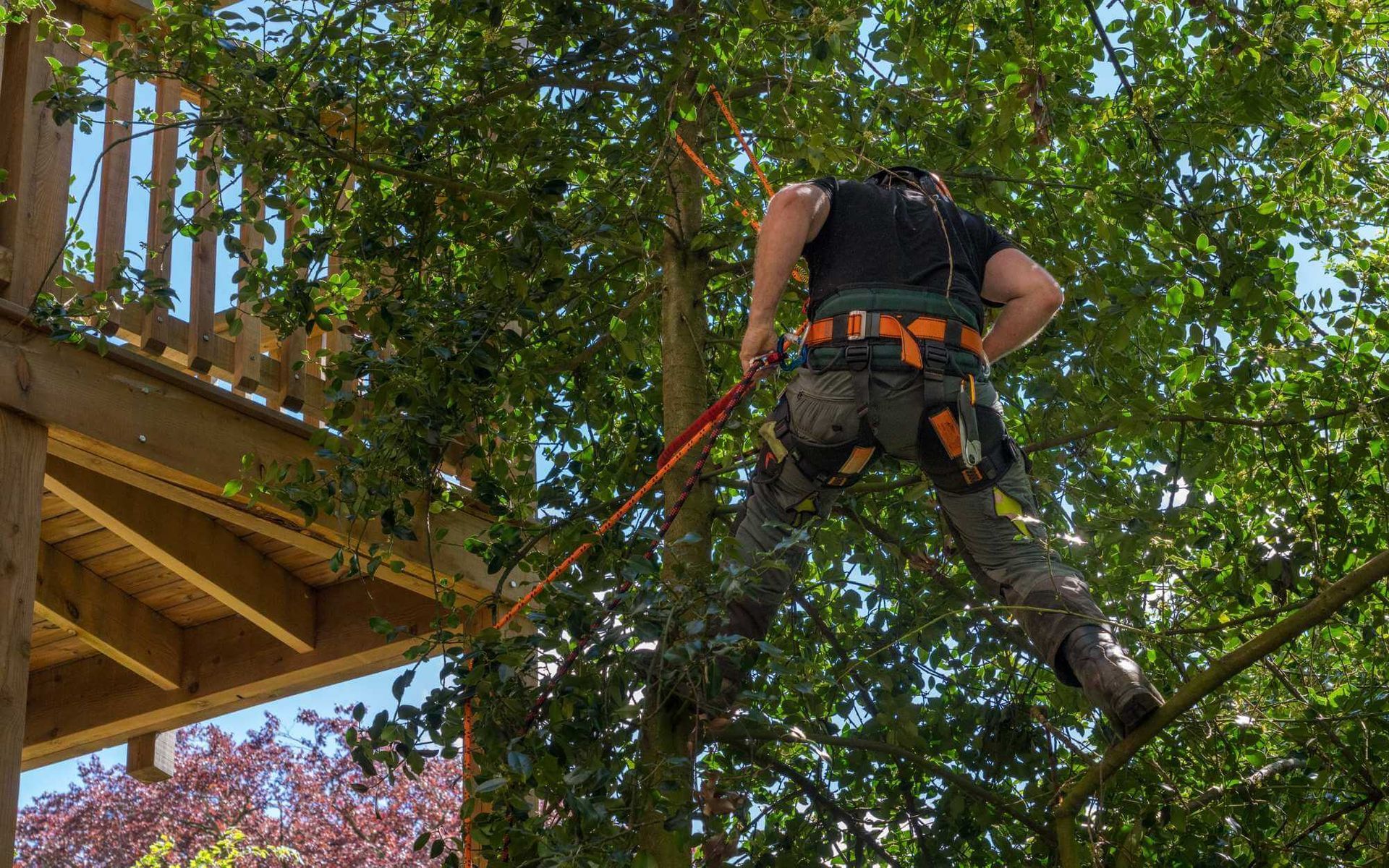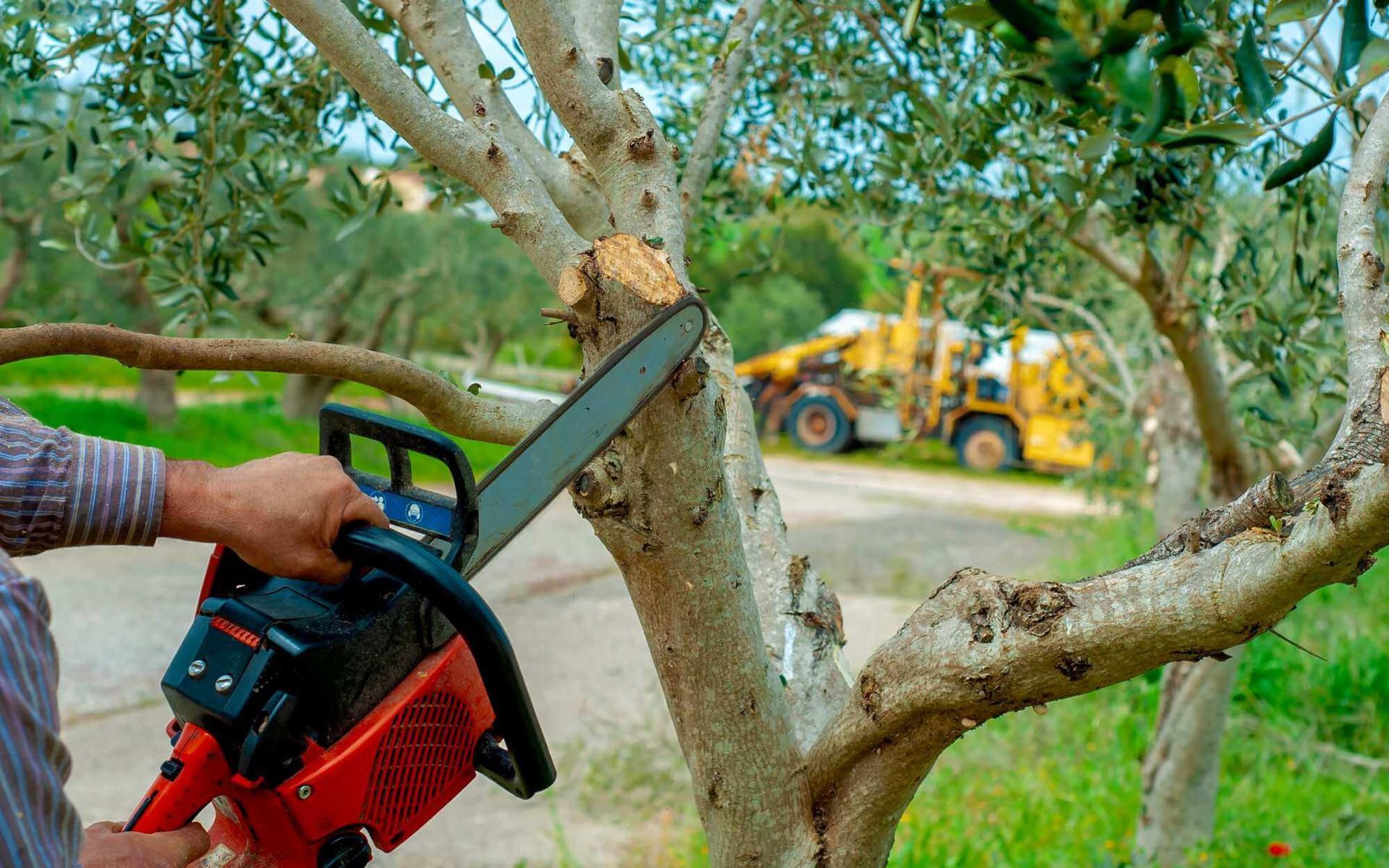Steps to Pruning Fruit-Bearing Trees for Higher Yields
PUBLISHED ON
SHARE THIS ARTICLE

Growing fruit trees is a rewarding endeavor. Not only do you get to enjoy the harvest once it ripens, but you also get to take pride in the results of your hard work. But one important step to bear fruit and ensure a successful harvest year after year is pruning.
Pruning, an often overlooked task, is the golden touch your backyard fruit trees need to yield a bountiful harvest. When executed correctly, it invites a plethora of benefits including improved fruit quality, disease prevention, and enhanced tree strength.
This article aims to demystify pruning, guiding you step-by-step to help your fruit trees thrive. So, put on your gardening gloves, grab your pruning shears, and let's delve into the world of strategic snips and cuts that could enhance your next harvest.
Step 1: Identify the Right Time to Prune

Pruning fruit trees at the right time is crucial and depends on the species and climate of your region. In general, late winter or early spring is considered the ideal time for pruning, just before new growth starts.
During this period, the tree is dormant, making it easier to see the overall structure and shape of the tree. Pruning during this time promotes healthy growth, encourages fruit production, and helps maintain the desired size and shape of the tree.
It's important to note that specific fruit tree varieties may have unique pruning requirements, so consulting local experts or resources for more precise guidelines based on Florida's climate is recommended.
Step 2: Gather Your Tools
Before starting to prune fruit trees, make sure you have sharp and clean pruning shears, which will be essential for precise and accurate cuts of small branches. Additionally, loppers should be available to tackle thicker lateral branches that may require more cutting power. For large branches, a saw will be necessary to effectively have these parts of the tree pruned.
By ensuring you have the appropriate tools at hand, you can approach pruning with confidence and achieve optimal results.
Step 3: Inspect Your Tree

Take a moment to carefully observe your tree before you begin the cutting process. Look closely for any indications of disease, such as discoloration or unusual growth patterns. Pay attention to dead branches that may pose a risk or compromise the health of the tree.
Additionally, identify any areas of the tree that appear overcrowded, where branches may be competing for space and sunlight.
Thoroughly assess the tree's condition so you can make informed decisions and prioritize the necessary pruning or trimming to maintain the tree's health and aesthetics.
Step 4: Remove Dead or Diseased Branches
When it comes to pruning trees, it is important to start by removing the branches that are dead or diseased. This proactive measure serves two purposes.
Firstly, by eliminating the dead or diseased branches, you can prevent the spread of disease to other parts of the tree, preserving its overall health. Secondly, by getting rid of these branches, you allow the tree to redirect its energy towards healthy growth. This ensures that the tree can thrive and flourish, promoting a vibrant and robust appearance.
Taking these necessary steps in tree maintenance can contribute to the long-term health and beauty of our natural surroundings.
Step 5: Thin Out Crowded Areas
Ensuring the vitality and flourishing of your trees necessitates taking proactive measures to preserve their canopy. A key approach to accomplish this is through meticulous pruning of overcrowded scaffold branches within the tree.
Enhancing air circulation within the canopy is crucial for promoting optimal tree health. This can be achieved by selectively trimming excessive branches and foliage. By employing this technique, sunlight penetration is maximized, ensuring that all parts of the tree receive the necessary sunlight for efficient photosynthesis, ultimately fostering the tree's well-being.
Step 6: Shorten Long Branches

To ensure the tree's manageability and fruit accessibility, prune long and overgrown branches. Trimming maintains the tree's shape, and structure, and promotes better fruit production. Removing excessive growth allows efficient resource allocation, resulting in healthier and more abundant fruits.
Regular pruning also prevents other branches from becoming too heavy and prone to breakage, reducing the risk of damage to the tree and its surroundings.
So, by practicing proper pruning techniques, you can enhance the health, appearance, and productivity of your tree while enjoying the delicious fruits it bears.
Step 7: Clean Up
Always remember to thoroughly clean up the pruned branches and leaves after pruning. By doing so, you not only maintain a tidy garden but also significantly reduce the risk of diseases spreading among your plants. This simple practice helps to ensure the overall health and vitality of your garden.
Step 8: Monitor Growth and Re-adjust
It's important to regularly monitor the growth of your tree after pruning. This way you can closely observe the development of the tree and identify any potential issues that may arise.
Keep a close eye on the fruit development, ensuring that it is healthy and progressing as expected. Be on the lookout for any signs of disease or pest infestation that may appear after pruning. By closely monitoring tree growth and addressing issues as they arise, you can adjust your pruning strategy to maintain overall health and productivity.
Start Pruning and Reap the Fruits of Your Labor!
Whether you have apple trees, peach trees, or sweet cherry trees, pruning them is a crucial aspect of gardening that fosters healthy fruit tree growth and abundant harvest. With these fruit tree annual pruning steps, you're well-equipped to start your pruning journey. Remember, patience and practice make perfect. So, grab your shears and start pruning!
Feel free to share your pruning stories with us, your insights could inspire fellow gardeners. Let's grow together! For further assistance, feel free to reach our expert fruit tree trimmers!
Want a free quote or some friendly advice? Call our team today:






